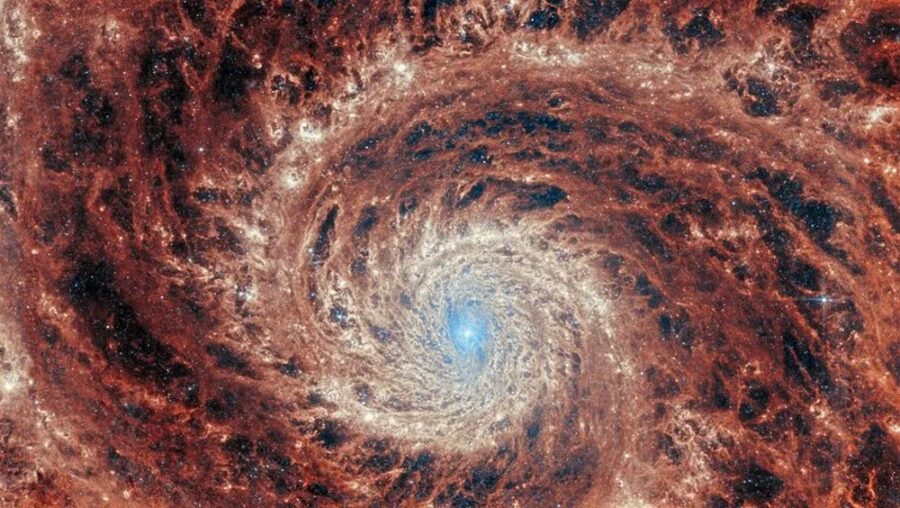Scientists Can’t Explain Mysterious Galaxy

Astronomers have discovered a new dwarf galaxy in the cosmos that went undetected for generations due to its strange formation and dim appearance. The tiny galaxy has been named Nube (or “cloud” in Spanish).
Under the scope of astronomers, the dwarf galaxy is nearly invisible and it cannot be explained through the current understanding of the cosmos. It’s so faint, in fact, that researchers have not yet been able to pinpoint the exact location of the galaxy.
The newly discovered dwarf galaxy is described in a study published in January 2024 as a “diffuse” collective, meaning that the stars that make up Nube are so widely spread that the galaxy barely emits any light at all.
Until now, science’s understanding of how a galaxy is constructed says that there should be a heavier concentration of light in the center of a galaxy, and it should fade the further from the center you look.
Under the scope of astronomers, the dwarf galaxy is nearly invisible and it cannot be explained through the current understanding of the cosmos.
There should be a bright celestial body in the middle of the formation to provide the gravity necessary to hold the galaxy together, which may explain why Nube is 10 times wider than it “should” be according to science. The dwarf galaxy is also 10 times dimmer than would be expected of a galaxy its size.
The lead astrophysicist of the study, Mireia Montes, stated that “with our present knowledge, we do not understand how a galaxy with such extreme characteristics can exist.” Mireia Montes devotes much of her life to studying the cosmos at the Institute of Astrophysics of the Canary Islands.

The discovery of the new dwarf galaxy came when Montes and her team were reanalyzing some older data collected by the Sloan Digital Sky Survey. The Sloan Digital Sky Survey is an extremely detailed astronomical database of our night sky.
It’s so faint, in fact, that researchers have not yet been able to pinpoint the exact location of the galaxy.
While rummaging through old data, an inconsistency was noticed. After taking a closer look at the inconsistency through a multicolor imaging telescope, the researchers were able to definitively label the anomaly as a dwarf galaxy, though it defies some specific ground rules laid by astronomical science.
Though the dwarf galaxy’s exact location in the cosmos cannot truly be determined given its dim appearance, the researchers gathered enough information to assert that the anomaly may be around 300 million light-years away from the Milky Way and it’s about a third the size of our galaxy.
Taking note of the structure of Nube, scientists cannot definitively explain how the dwarf galaxy is held together. With so little mass at its center, one would think there would not be enough gravity generated to hold the structure of the galaxy, but Nube exists nonetheless.
“With our present knowledge, we do not understand how a galaxy with such extreme characteristics can exist.”
Mireia Montes, lead astrophysicist of the study
Astronomers would typically explain the gravitational anomalies of Nube through the existence of dark matter. Dark matter is a very mysterious type of matter that is thought to compose around 27 percent of the mass of the known universe. However, the current understanding of dark matter would suggest that there isn’t enough of it present in the dwarf galaxy to explain its unusual properties.
Whatever the cause of Nube’s weird properties, astronomers are now on the lookout for more dwarf galaxies with similar constructs. Finding more galaxies like Nube will help expand the current understanding, and open up new avenues for the future of astronomical studies.
Source: Astronomy & Astrophysics












